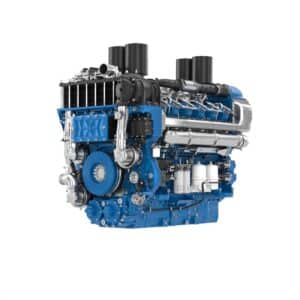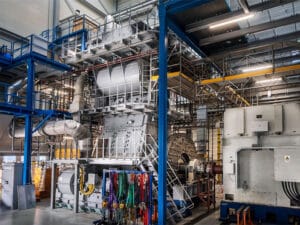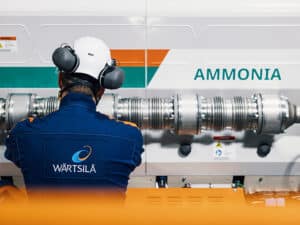
WinGD introduces new VCR engine technology
Written by Nick Blenkey
“VCR finally brings compression without compromise to marine dual-fuel engines,” says WinGD’s Marcel Ott
Winterthur, Switzerland, headquartered engine designer WinGD has introduced an engine technology that, it says, for the first time eliminates the need for ship operators to compromise on optimal combustion when using multiple fuels. The variable compression ratio (VCR) technology, jointly developed with Mitsui E&S DU Co (MESDU), will be installed on a vessel powered by an X62DF engine and then rolled out across selected engines of the WinGD’s X-DF range.
An engine’s compression ratio is usually a fixed parameter, playing a direct role in power and fuel efficiency. As different fuels have different ideal compression ratios, in dual-fuel engines designers have had to select which fuel to optimize for. With VCR, the engine adjusts to each fuel’s optimal compression, improving fuel efficiency for operators who want the flexibility to choose between diesel, LNG or bio- or e-fuel equivalents depending on availability and cost.
With WinGD’s VCR technology, compression ratio is altered by changing the piston position to adjust combustion chamber volume.
“The simple mechanical configuration has no impact on engine footprint or installation requirements,” says WinGD. “VCR can also be adjusted for part load operation, meaning relatively larger savings can be achieved at the low speeds that operators may consider to further reduce their emissions.”
COMPRESSION WITHOUT COMPROMISE
“VCR finally brings compression without compromise to marine dual-fuel engines,” said Marcel Ott, general manager application engineering at WinGD. “This breakthrough, the result of several years of work with MESDU, comes at a crucial time in the maritime industry as operators increasingly look for the ability to switch between fuels without sacrificing power, efficiency or emissions.”
In trials on a 6X72DF test engine at MESDU’s facilities in Japan, VCR reduced fuel consumption and CO2 emissions by 6% when running on diesel mode. Although the engine had previously been optimized for gas mode, improvements were also evident when using LNG, with fuel consumption and emissions reduced by 3%. The improvement was achieved because the engine was originally configured to a compression ratio that favored LNG while still offering good diesel performance. With VCR, this compromise is no longer required.
As well as optimizing compression ratios for different fuels, VCR can also benefit engines operating under different ambient conditions and intake air compositions, such as when using exhaust gas recirculation, says WinGD.
CSSC Group member WinGD plans to introduce VCR as an option for its X72DF, X62DF and short-stroke X62DF-S engines, with retrofit packages available after the technology is introduced for newbuilds. A wider portfolio roll out will be considered based on market demand.




